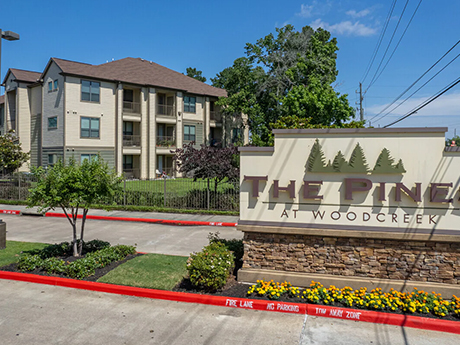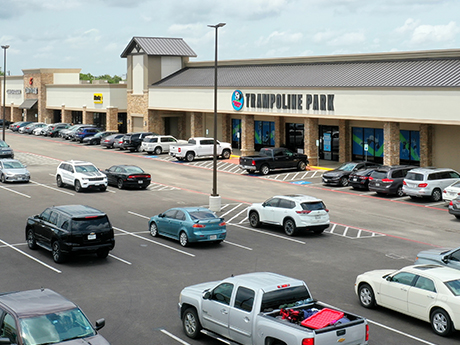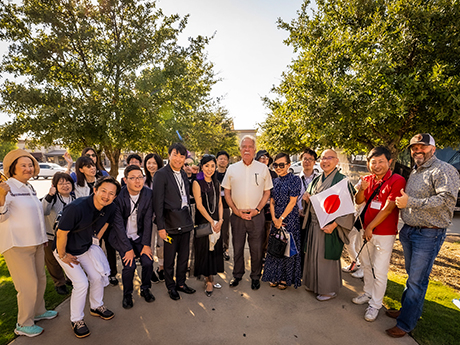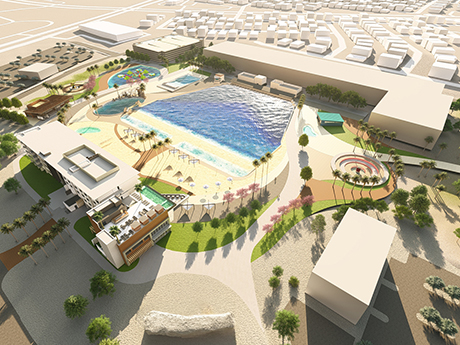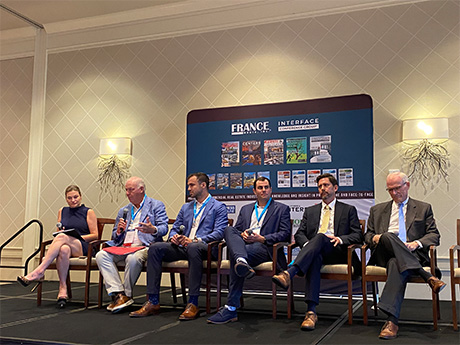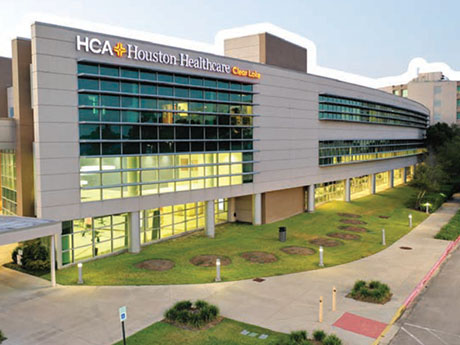By Eric Burtt, executive vice president, partner development, Blue Stream Fiber In Texas, we pride ourselves on doing everything big. From booming cities to iconic skylines, the state is a magnet for growth and innovation. But when it comes to one of the most essential modern residential amenities — high-speed internet — multifamily properties aren’t always living up to the Texas standard. Connectivity has shifted from being a “nice-to-have” feature to a core utility in today’s real estate market. Just like water and electricity, residents expect fast, reliable internet to be ready from the moment they move in. For property owners and developers, the expectation is no longer just a service decision; it’s a marketing and investment decision. Why Connectivity Matters More Than Ever Internet use is not coming to a halt anytime soon. According to the National Telecommunications & Information Administration, in 2023, 13 million more people were online compared to just two years earlier. Today’s households download nearly 700 gigabytes (GBs) of data each month, and usage is still climbing. High-speed connectivity isn’t just about meeting tenant expectations. It’s also essential for protecting and growing property value. For owners and investors, properties with robust fiber connectivity lease faster, …
Market Reports
HOUSTON — In the span of eight months — a blip in the life cycles of most commercial real estate deals and projects — lenders in the Houston industrial space have gone from enthusiastic to tepid to back to borderline optimistic. This pendulum-like pattern that has reflected the vacillating appetites of capital providers to deploy funds is not unique to the Houston industrial market. At the start of the year, commercial lenders across a range of asset classes and markets expressed positive expectations for 2025. A new, pro-business presidential administration, the building on short-term interest rate cuts in late 2024, a widespread sense that it was simply time to get back into the game — all of these notions played into an ebullient outlook for commercial deal volume in the new year. Editor’s note: InterFace Conference Group, a division of France Media Inc., produces networking and educational conferences for commercial real estate executives. To sign up for email announcements about specific events, visit www.interfaceconferencegroup.com/subscribe. It would not last very long. Unconventional, sweeping policies implemented by the second Trump administration, including mass layoffs of federal employees and implementation of tariffs on major American trading partners, deeply rattled investors and capital providers. Even as the administration …
By Kenneth Katz, principal at Baker Katz Growth and innovation opportunities remain strong in Texas, despite ongoing changes in the retail sector. True potential often emerges not just from redeveloping individual buildings, but also from reimagining the future of entire communities. Identifying underutilized retail assets where others see stagnation — and meticulously transforming them into vibrant, value-generating destinations — is key to successful retail redevelopment projects. At its core, redevelopment is a response to change. When commercial properties are first built, they are typically developed to meet a market’s needs in terms of an appropriate tenant mix, functional layouts, attractive aesthetics and other key attributes. Over time, however, as communities evolve, populations shift, infrastructure expands and tenant preferences and tastes change, previously optimized projects can gradually underperform. These shifts create opportunities for thoughtful redevelopment. Identifying Strong Candidates Properties that no longer meet the desires or needs of a community are often the strongest candidates for redevelopment. These can include projects with outdated configurations, limited accessibility due to changes in roadways or high vacancy rates from tenant relocations or bankruptcies. Other high-potential properties may suffer from deferred maintenance that has reduced occupancy and rents or from aesthetic obsolescence that discourages both …
By Taylor Williams Everybody always remembers the one who got away, but what if they’d never shown up to the party in the first place? Or in the case of the Texas commercial development boom, is it possible that one specific asset class simply never took root, or is it more likely that it just hasn’t happened yet? The mystery party guest/asset class could only be life sciences — a sector that is somehow a quasi-subcategory of healthcare real estate, a longshot end use for an industrial conversion, a property type that represents the evolution of commercial-grade lab space and an investment vehicle that has captured billions of capital in coastal markets — all rolled into two basic words. And while the big-money question surrounding life sciences growth in Texas is not “what?” but “when?,” examining what the field actually already encompasses in the state is important to understanding the potential for a future boom. After all, it’s not as life sciences is nonexistent in Texas. According to a 2025 report from JLL titled, “Why Texas Life Sciences?” there are already some 8,700 life sciences companies employing more than 150,000 people in the state. More than $1.5 billion in combined …
By Jane Witowich, business operations manager, Day One Experts In Collin County, two fast-growing Texas cities are charting a new path for economic development that prioritizes efficiency, adaptability and smart decision-making over traditional staffing models. Fairview and Melissa, a pair of suburban communities facing explosive population growth and mounting development pressure, have adopted a fractional approach to economic development. Instead of creating or adopting full-time, in-house departments, both cities have strategically partnered with outside expertise to stay visible in national site selection circles, foster new investment and keep costs in check. That decision, born out of necessity, is quickly proving to be a blueprint for others. A Model Rooted in Strategy The challenges faced by these teams in Fairview and Melissa are familiar to city leaders across Texas: developer interest is growing, expectations from residents are rising and yet budgets remain constrained. Hiring full-time economic development staff, building marketing infrastructure and funding national outreach campaigns — these initiatives often stretch beyond what smaller cities can reasonably afford. Rather than let those constraints define them, Fairview and Melissa made the deliberate choice to adopt a fractional model. Through partnerships with experienced consultants such as Day One Experts, led by veteran economic …
By Taylor Williams In 2016, the Dallas Cowboys went 13-3, finished in first place in the NFC and had five players earn All-Pro selections — arguably the team’s best season-long performance since its heyday in the 1990s. That’s about all the reminiscing that this writer, who hails from Atlanta, cares to do on the 2016 NFL season. But is it purely coincidental that one of the Cowboys’ most dominant regular-season campaigns in the past three decades coincided with the opening of The Star, the team’s world headquarters and practice facility in Frisco? Perhaps. But for the North Texas region as a whole, the planting of the Cowboys flag outside of city limits marked a sort of coming-out party, a bold declaration that the areas north of the metroplex were primed for major job and population growth, as well as corresponding real estate development. “When Frisco secured the Dallas Cowboys’ headquarters and The Star District in 2016, it seems to have led to a waterfall of momentum,” says Gloria Salinas, senior vice president and chief growth officer of the Frisco Economic Development Corp. “During that time, Frisco demonstrated an ability to align civic leadership with business priorities, accelerating timelines for that …
By Taylor Williams Raising equity to get new projects to pencil out is, at the moment, immensely challenging in the Houston multifamily market. Although debt providers are showing a willingness to lend at favorable leverage ratios despite the fact that Houston has had healthy levels of new apartment deliveries in recent months, meeting the required returns that equity providers demand is challenging due to ever-increasing construction and operating costs. As a result, some projects are fizzling, even if they feature good locations or present compelling stories to capital providers. Editor’s note: InterFace Conference Group, a division of France Media Inc., produces networking and educational conferences for commercial real estate executives. To sign up for email announcements about specific events, visit www.interfaceconferencegroup.com/subscribe. This finding was the consensus among a panel of five Houston multifamily owners who were asked to identify the single-biggest challenge to new development in the current environment. The panelists gave their remarks at the inaugural InterFace Houston Multifamily conference, which took place on June 17 at The Briar Club and was attended by some 200 industry professionals. Crystal Kingsbury, director of marketing and business development at Anchor Construction, served as the panel moderator. “The equity guys are really tough right now,” …
By Eric Jacobs, chief global growth officer, Aimbridge Hospitality With different verticals and geographic hotspots driving continued travel and performance potential in hospitality properties, investments in these assets should be on the radars of forward-thinking investors. A resilient market that was most recently challenged by the COVID-19 pandemic, the hotel sector continues to be an area of curiosity and consideration for investors looking for their next opportunity. At the start of the year, hotel transaction volume was projected to rise by 15 to 25 percent nationally, according to JLL’s Global Hotel Investment Outlook report for 2025, with institutional capital flowing back into the sector. While this projection hasn’t come to fruition, exploration of hospitality deals is ongoing, and the most prepared investors and developers are keeping fingers on the pulse of markets that will generate returns in the future. Enter Houston. A current standout market and one to watch, the city’s unique demand drivers, performance metrics and positioning within the larger Texas market have created fertile ground for hotel investment. Convention Disruption Brings Opportunity One of the most significant factors behind Houston’s surge today is the simultaneous renovation and expansion of convention centers in Austin, Dallas and Fort Worth. These …
AUSTIN, TEXAS — The concept of locating similar types of commercial real estate uses in close proximity to one another to allow those users to naturally develop synergies — clustering — is an age-old practice in certain asset classes like office, retail and hospitality. But the strategy can make sense for industrial real estate as well, especially in a time in which new subcategories of industrial uses are attracting capital and generating demand for space. Logistics and distribution users, for example, typically identify transportation costs as their top line item on the expense side of the ledger. Those companies have little choice but to pay top dollar for land or space near the rooftops of their existing customer bases so as to minimize transit costs. Editor’s note: InterFace Conference Group, a division of France Media Inc., produces networking and educational conferences for commercial real estate executives. To sign up for email announcements about specific events, visit www.interfaceconferencegroup.com/subscribe. Data center users cannot properly and profitably function without access to cheap electricity, hence the ability of Texas to land many of those deals via its deregulated power grid. Suppliers of smaller industrial parts and components are often supported by a handful of major manufacturers, and …
By Taylor Williams The municipalities that comprise Houston’s southeastern suburban rings are on the rise, fueled not only by the larger population growth that has defined Texas in the 21st century, but also by expanded commerce and real estate development tied to the ports of Houston and Galveston. These municipalities vary tremendously from one to the next with regard to their size, both land- and population-wise. In addition, they possess varying degrees of maturity in terms of their microeconomies and real estate markets. Yet among the four cities in this region that Texas Real Estate Business spoke with for this story — Alvin, Webster, League City and Nassau Bay — some commonalities exist within their economic development endeavors. These include drawing on growth in the hospitality sector from the Port of Galveston’s thriving cruise business, as well as preparing for future real estate opportunities that will emerge from infrastructural projects, most notably the expansion of State Highway 99, known locally as Grand Parkway. As these cities work to expand their housing inventories, recruit new businesses and provide the ideal mixes of retail, restaurant and entertainment uses, they look to both traditional and new economic drivers. In doing so, they cultivate …


